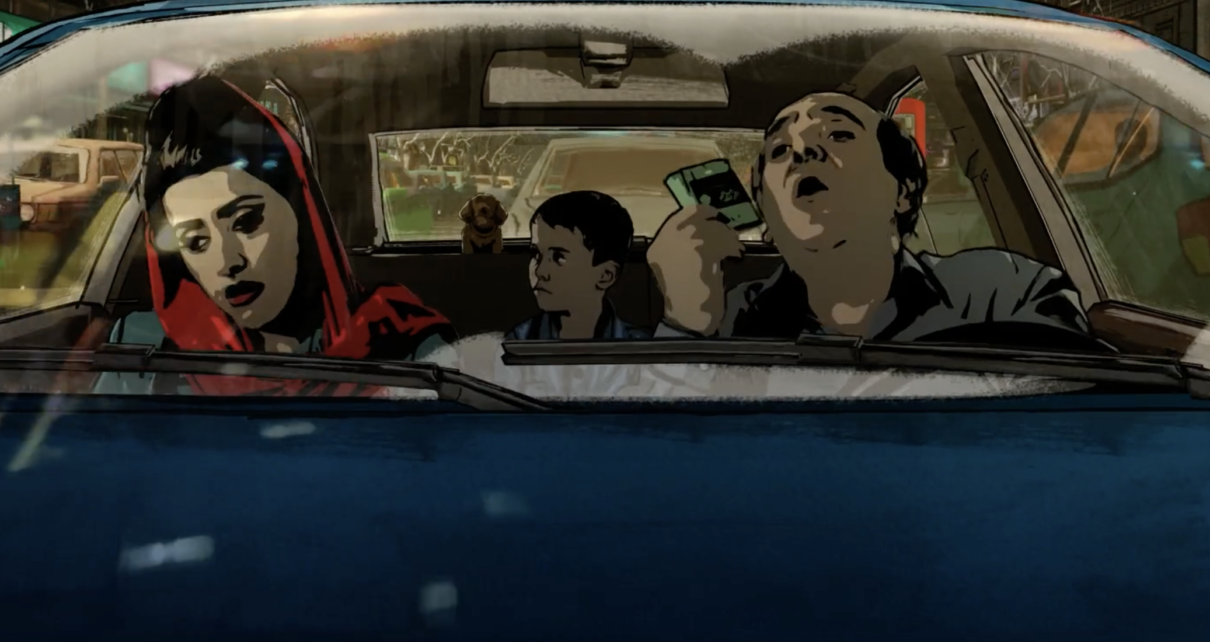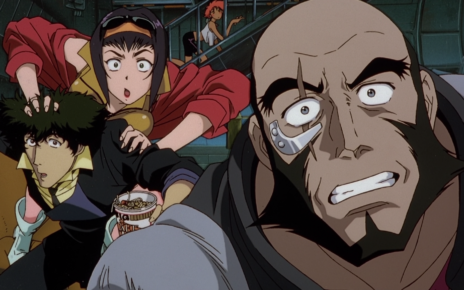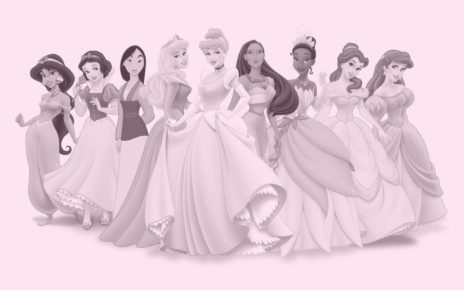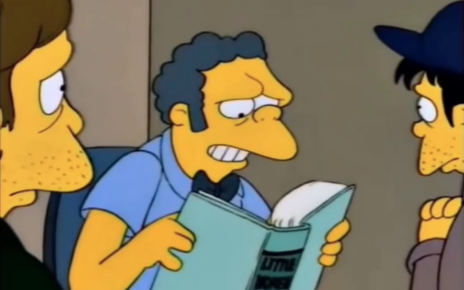AIF Chats
Part of a series of chats we had with directors at the Animation Is Film Festival.
When I am introduced to director Ali Soozandeh at the Animation Is Film Festival, the man is sitting by himself. He stands and gently shakes my hand, hardly raising his voice above a whisper when he speaks.
“This story is about daily life so it isn’t a fantasy story or [a] story for children,” he tells me, describing Tehran Taboo, his new, defiantly political film that picks apart the sexual mores of the Islamic Republic of Iran. He is soft spoken—not exactly what one would expect from the creator of a film like this.
Tehran Taboo pulls no punches. Animated in rotoscope and CGI, the film depicts a brutal and provocative portrait of the sexual and personal restrictions for people living in the city of Tehran, Iran. The story revolves around four characters whose paths constantly cross: a resilient prostitute who cares for her son, a young housewife whose husband refuses to let her work on her own, and a young male musician who must find a way to pay for the surgery of an engaged woman after he (unlawfully) takes her virginity at a club one night. Every scene is loaded with commentary about the sexual taboos that hold its characters back, and the double standards and hypocrisy that poison the city. It is an ultimately a tragic tale, relying on rotoscope, a process that animates over live-action sequences, to create as realistic a film as possible without leaning entirely on live-action.
“We couldn’t shoot in Tehran because of censorship. Of course, you can shoot in other cities in place of Tehran like Jordan or Morocco, but it doesn’t really work.”
Now a German citizen who lived in Tehran for the first 22 years of his life, Soozandeh relishes in his artistic liberty to openly address what those who live in the city struggle to. The messages become a little extreme at certain points, practically hitting the viewer over the head with brutal examples and reminders of Tehran’s sexual taboos. The first scene—in which a young mother is picked up by a man and gives him a blowjob while her son sits idly in the backseat of a car—is a shocking moment that sets the tone for the rest of the movie. The driver notices his daughter is holding hands with a man on the street, and begins to complain until he crashes his car in a fit of anger. Of course, Soozandeh is well aware of just how powerful imagery like that is.
“We needed to show [that] the film is about restrictions beyond society. Especially sexual restrictions,” he explains, leaning in close as if were intimating a personal secret. “And the result is a double standard. In this scene, you [the audience member] see what we want to tell you. It’s a hard scene, of course. But we need to talk about it very directly.”
Iran’s restrictions of freedom of expression are well-documented, and they’re why Soozandeh could never have made his film in that country. “There are a lot of Iranian filmmakers inside Iran who talk about taboos, but they can’t talk about it directly,” he says. “Everybody knows it but nobody wants to talk about it. It’s our education [in Iranian society]. So it’s hard to make a confrontation of taboos. But it’s the only way to talk about it and start a dialogue and find a solution.”
Being able to address these issues head on is not a responsibility Soozandeh takes lightly. Because it was impossible to actually shoot the film in Tehran, Soozandeh and his team meticulously re-created the city using CGI animation — a true testament to the medium’s ability to bring anything to life. And the result is well worth it; the city of Tehran itself feels like a character in the movie, its distinct look popping to life with color and movement.
“We couldn’t shoot in Tehran because of censorship,” Soozandeh says. “Of course, you can shoot in other cities in place of Tehran like Jordan or Morocco, but it doesn’t really work. The city has its own look: the buildings, people, cars, clothes. It’s so special. You cannot fake it. So that is why we used animation.”
But just like all great animation, it was not easy to pull off any semblance of realism. Soozandeh and his team had to create the whole environment in CGI, using pictures and photographs of German buildings and painting 3D objects over them—a laborious, multi-step process.

“We tested a lot of other animation techniques, like hand-drawn characters of 3D characters or puppet animation, but none of them really worked,” he says. “We needed that touch of reality…. Rotoscope gave us this chance to bring this touch of reality into animation.”
Even in 2017, creating film using rotocope techniques isn’t easy. “We made the film two times. One time in a green-screen studio with just a normal film crew and one time in animation,” Soozandeh says. “The first stage with green screen, the challenge was to give the actors orientation. For example shooting in a bazaar… in a bazaar you find a lot of things: sounds, how loud is it, other things. In green screen, you have nothing: Ground, some walls, a camera and some lights. You need to give the actors this first orientation. It’s difficult.”
It’s one thing to do that for, say, The Lord of the Rings’ 1978 film adaptation—one of the most famous examples of rotoscoping in animation history, and another to do it for a film with much more serious, caustically realistic subject matter. When asked if he’s at all concerned about the way his film will be received—given its blunt depictions of sex, especially to an audience that may not be aware of cultures such as Tehran—this is how he responds:
“You’ll find a lot of societies with the same problems,” he says. “ I get a lot of people who come from North Africa and the Middle East and say this story could take place in their countries. The people are the same. The dreams are the same. The circumstances are just different.”
Although the topics Soozendeh addresses are morbid, even painful, he remains optimistic, and says he looks forward to the film’s exposure in Hollywood and his first foray into the United States. He even manages a laugh.
“How do we change a society?” he asks rhetorically, considering the potential answers. “Of course, education is the most important.” Maybe the film he’s made can spur that education along.
Thanks for reading The Dot and Line, where we talk about animation of all kinds. Don’t forget to for this article and follow us on Twitter and Facebook.





